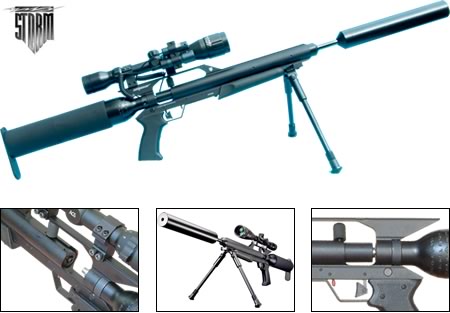Just look at this weapon. All the factors to make a gun nut cream himself. A pistol gripped, bi-poded, noise suppressed, scoped, single action sniper rifle. Described by the merchant as "The Gunpower Storm. A high-performance take-down hunting rifle which also serves as an accurate target shooting gun". Its all yours from www.guncity.co.nz for $1,999.00 including GST plus postage and packaging. No licence needed. Just flash your id and this killer is yours. This is an example of the high-powered air rifles that have received coverage due to the two recent homocides of the Don Wilkinson and Keith Kahi.

Criminal's will use what they can get. Hence the use of the traditional kiwi sawn-off .22 for pub, dairy and bank robberies. These high-powered pre-charged air-rifles are just the next step up and look a hell of a lot more dangerous than, and are, a 50 year old rabbit gun stolen from a farm-house. The next level of escalation will be to these unregistered assault weapons.
The last time our gun laws were revised was post-Aramoana. I hope this week's two tragic episodes, the death of Keith Kahi in Auckland, the Christchurch slaying of Gage the police dog, will bring to gun-control to the forefront of political debate and the need to make changes to the availability of all firearms to the public. My big wish is for the sale of assault style weapons to be banned before too many are out and about in our communities. And prevent another Aramoana or heaven forbid a Columbine. I wonder if the folk at Gun-City ever listen to the Mutton Birds song, a thing well made, this tells the story of a Christchurch gun dealer going about his work in the early 1990's. The collector down the line was D.M. Gray and this is his AK-47.
so I do the mail orders
there's nothing much
for a hunter over in Westland
and oh yeah
one of those AK-47s
for some collector down the line
-A thing well made: Don McGlashen
Peace,
Tony.




